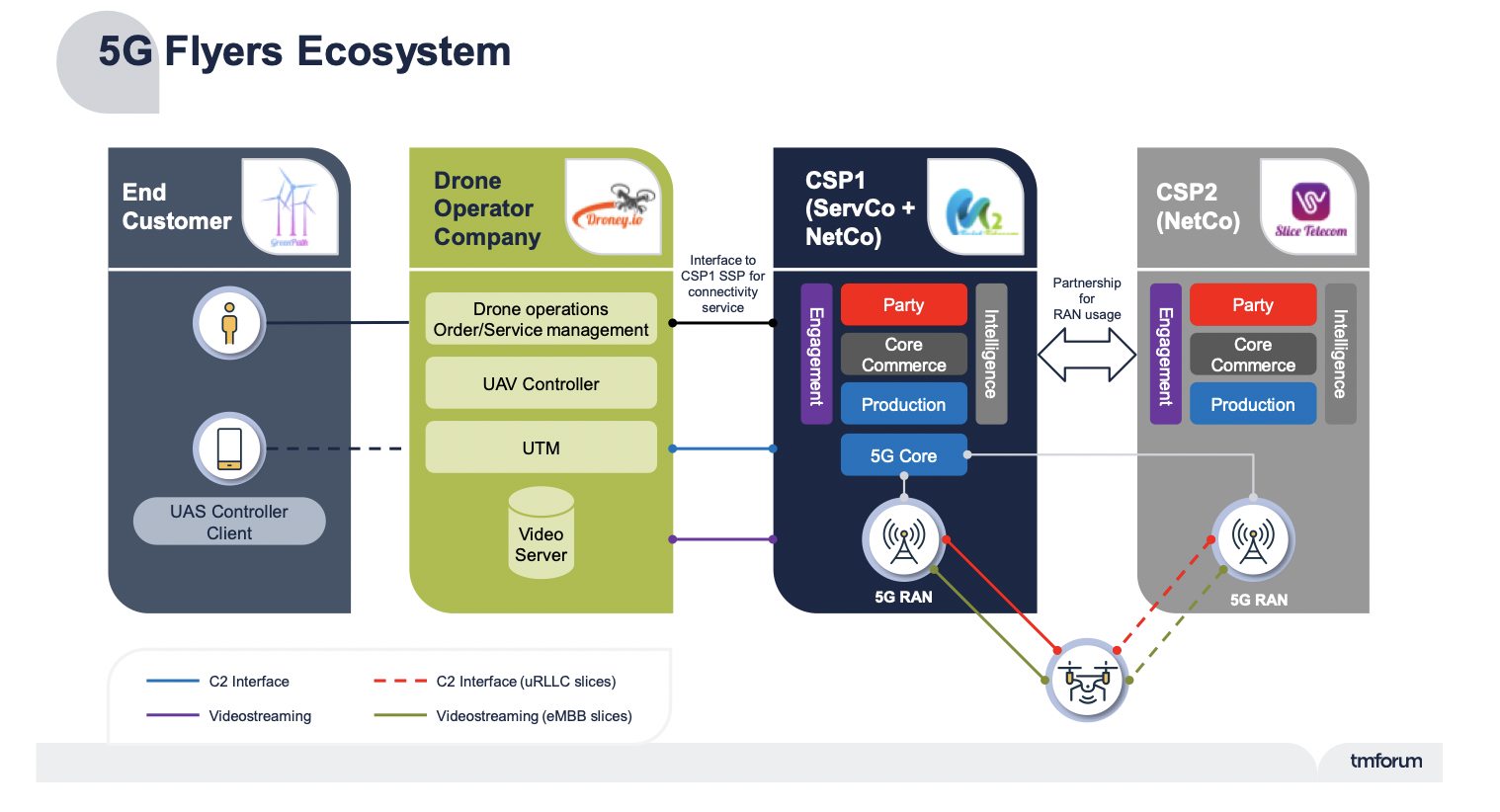How Drones Are Primed for Take-off
with Multi-CSP 5G Slicing
The partner CSP accepts the request after performing an end-to-end feasibility check, and the drone communication service is ordered and fulfilled. After running through the pre-flight checks, the drone operator can then execute the mission as planned, dynamically triggering live video streaming at specific points. By providing this end-to-end service (E2E) in partnership with other organizations in the ecosystem, the CSP can provide dynamic connectivity with E2E QoS guarantees.
In addition, the Catalyst also illustrated how the drone operator’s drone management system can integrate directly with the CSP management systems using TMF Open APIs to enable the drone operator to control and configure its use of the underlying CSP 5G network more directly. Such exposure and integration of network control into enterprise applications such as these opens more opportunities for enterprises to exploit, and CSPs to monetize, 5G network slicing.

Figure 1 – 5G Flyers Ecosystem - a drone operator using multiple network slices
from two CSPs for mission-critical drone services.
click to enlarge
Key takeaways
The project explored ways in which slices across multiple CSP networks enhance the quality and security of BVLOS drones, and the impact this will have on the sector, adjacent sectors, and society in general. By making use of modeling and real-world scenarios, the catalyst identified gaps in existing standards and examined potential solutions—particularly in finding the most effective ways in which dynamic slice design, activation, and stitching can be exploited to provide mission-critical services across a broad ecosystem of players.
Achieving this will depend on a consistent and high quality of service (QoS) that ensures 5G services and slices can be dynamically stitched between CSPs. This will also necessitate appropriate partnering and the adoption of uniform technical and commercial standards.
The findings from this Catalyst provide valuable lessons for the rest of the industry and pave a path to wider use of multi-CSP network slicing. Doing so promises significant rewards, not only for the communications and drone aviation industries but also for wider society in general: increased use of drones that can operate beyond visual line of sight will dramatically reduce the time and cost required in a range of activities. This can yield obvious benefits, including boosting productivity, lowering labor costs, and significantly reducing congestion, as delivery vehicle numbers are reduced on roads, and with them delivery times.
The most valuable outcomes of this overall endeavor include a broad and detailed exploration of the challenges and opportunities offered by 5G in enabling the provision of mission-critical services—and crucially how CSPs might best work together to make this happen. As the mobile and aviation industries continue to progress toward regulatory alignment at local, national, and international levels, mass deployment of commercial cellular-enabled drones seems closer than ever. As this Catalyst highlighted and addressed some of the key technical and organizational barriers, the skies look brighter than ever.



















